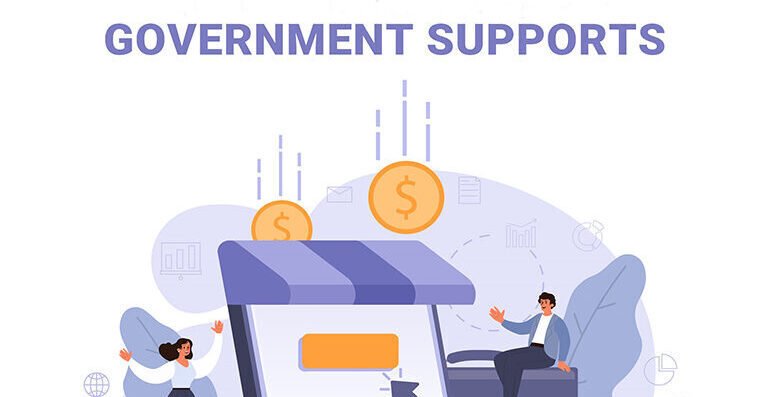-
Introduction: The Startup & MSME Boom in 2025
The year 2025 marks a turning point for India’s entrepreneurial ecosystem. Startups and Micro, Small, and Medium Enterprises (MSMEs) are no longer just buzzwords—they’re the engines driving economic growth, employment, and innovation in the country. With a strong push from the government, the startup ecosystem has matured dramatically. India now boasts one of the fastest-growing startup scenes globally, supported by a vibrant network of investors, accelerators, and policy frameworks.
To ensure these ventures don’t just survive but thrive, the Indian government has implemented a slew of policy reforms and financial schemes tailored specifically for startups and MSMEs. From funding access to regulatory relaxations, these schemes form the backbone of India’s economic aspirations.
Let’s break down these schemes in 🔸extreme detail to see how they work, who’s eligible, what benefits they offer, and why they matter in 2025.
-
Startup India Scheme: The Flagship Launchpad
🔸Launched in 2016, the Startup India Scheme continues to be the flagship initiative for new-age Indian entrepreneurs. In 2025, the scheme has evolved significantly, making it even more attractive and accessible for first-time founders.
🔸Under this scheme, startups are eligible for various benefits: income tax exemption for the first 3 years, easier compliance norms, fast-tracked patent application processing, and access to a massive ₹10,000 crore Fund of Funds managed by SIDBI.
🔸In 2025, the eligibility criteria have been widened—now including startups up to 10 years old, with an annual turnover of up to ₹150 crores, up from the previous ₹100 crores. This change has made mid-sized startups eligible for benefits, not just the early-stage ones.
🔸The DPIIT (Department for Promotion of Industry and Internal Trade) has also digitized the recognition process completely, reducing approval times from weeks to days.
-
MUDRA Yojana: Financial Fuel for Small Enterprises
🔸The Pradhan Mantri MUDRA Yojana (PMMY) is a government-backed loan scheme targeted at micro and small enterprises. In 2025, it remains a game-changer for grassroots entrepreneurs who lack collateral and formal banking history.
🔸The MUDRA loans are divided into three categories:
🔹Shishu (loans up to ₹50,000)
🔹Kishore (₹50,000 to ₹5 lakh)
🔹Tarun (₹5 lakh to ₹10 lakh)
🔸In 2025, digital onboarding, eKYC, and AI-powered credit scoring tools have made MUDRA loans easier to access, especially for rural MSMEs. More than ₹4 lakh crore has been disbursed so far, and repayment rates remain impressive due to better financial literacy initiatives.
🔸Women entrepreneurs now receive interest subsidies of up to 2%, further pushing gender equity in MSME funding.
-
Credit Guarantee Fund Trust for Micro and Small Enterprises (CGTMSE)
🔸This scheme, managed by SIDBI and the Ministry of MSME, provides credit guarantees to financial institutions so they can offer collateral-free loans to MSMEs.
🔸In 2025, the corpus of the fund has been expanded to ₹1.5 lakh crore, and the upper credit limit has been increased to ₹5 crore per unit. This helps startups and MSMEs access higher amounts of working capital and term loans.
🔸The default coverage ratio has also improved. Now, in case of non-repayment, lenders are covered up to 85% of the defaulted loan, which reduces their risk and encourages more lending to small enterprises.
🔸New-age fintechs are also allowed to participate as lending partners in CGTMSE, drastically increasing outreach.
-
SIDBI’s Fund of Funds for Startups (FFS)
🔸Managed by SIDBI, the Fund of Funds for Startups is a ₹10,000 crore corpus used to support SEBI-registered VC funds. These VCs, in turn, invest in startups.
🔸As of 2025, more than ₹7,800 crore has already been allocated, backing over 700 startups indirectly. The fund doesn’t invest directly into startups but amplifies the capital available by de-risking early-stage investments for venture capitalists.
🔸The scheme focuses on deep-tech, clean energy, med-tech, and agritech sectors, which align with national priorities.
🔸Startups in Tier 2 and Tier 3 cities now get preference, democratizing capital access beyond metros.
-
Stand-Up India Scheme: Boosting SC/ST and Women Entrepreneurship
🔸This scheme empowers underrepresented entrepreneurs—SC/ST and women—by offering bank loans between ₹10 lakh and ₹1 crore for starting greenfield enterprises.
🔸As of 2025, the scheme has helped over 3.2 lakh women and 1.4 lakh SC/ST entrepreneurs launch their own businesses.
🔸The 2025 update includes interest subvention (up to 3%) and mentorship tie-ups with NGOs and incubators. This makes the scheme more than just about capital—it’s now a holistic support system.
🔸Banks are mandated to provide at least one loan per branch under this scheme, ensuring national penetration.
-
Production Linked Incentive (PLI) Scheme for MSMEs
🔸The PLI Scheme, originally meant for large manufacturers, has been extended to MSMEs in 2025. The idea is to boost domestic manufacturing, reduce imports, and create jobs.
🔸Eligible MSMEs can now get direct cash incentives of 4%–6% on incremental sales for products in sectors like electronics, textiles, pharmaceuticals, drones, and auto components.
🔸Special carve-outs are made for startups and MSMEs in sunrise sectors, including EVs, green hydrogen, and advanced battery tech.
🔸This integration of MSMEs into high-tech manufacturing makes them globally competitive.
-
SAMARTH Udyog Bharat 4.0: Tech Empowerment for MSMEs
🔸Launched as a digital transformation mission, SAMARTH helps traditional MSMEs adopt smart technologies—IoT, cloud, AI, robotics, and machine learning.
🔸In 2025, over 15,000 MSMEs have been digitally transformed with government funding support.
🔸The scheme includes tech-readiness assessments, training, subsidized digital tools, and access to shared smart manufacturing labs.
🔸It’s helping India’s small industries leapfrog into Industry 4.0 without needing massive upfront investments.
-
TReDS (Trade Receivables Discounting System)
🔸TReDS is a digital platform that enables MSMEs to get early payments against their trade receivables from large corporates.
🔸In 2025, TReDS has become a regulatory mandate for all PSUs and large corporations to onboard, helping clear over ₹1 lakh crore in pending MSME payments.
🔸Discounting is done via e-bidding from banks, NBFCs, and factoring companies—ensuring competitive rates and fast access to liquidity.
🔸It solves a core MSME pain point: delayed payments from buyers.
-
Udyam Registration & MSME Databank
🔸Udyam is now the universal digital ID for all MSMEs in India. It replaces the earlier Udyog Aadhaar system and is mandatory to access any government scheme.
🔸In 2025, Udyam is integrated with PAN, GST, and DigiLocker, enabling automatic data verification, easing compliance, and giving policymakers real-time insights into the MSME sector.
🔸It also helps startups and MSMEs get visibility for tenders, export promotion benefits, and cluster-based schemes.
🔸The MSME databank further allows for targeted interventions based on sector, region, and size.
-
CHAMPIONS Portal: One-Stop Digital Helpdesk
🔸CHAMPIONS (Creation and Harmonious Application of Modern Processes for Increasing the Output and National Strength) is a centralized grievance redressal and support portal for MSMEs.
🔸It offers handholding for raw material procurement, funding issues, tech support, and policy clarifications—all via an integrated digital dashboard.
🔸In 2025, it has a built-in AI chatbot, escalation matrix, live mentor connections, and integration with PMO monitoring for faster resolution.
🔸It’s become the digital backbone of India’s MSME support framework.
-
Conclusion: MSMEs and Startups are India’s Economic Superstars
2025 isn’t just another year—it’s a defining chapter for startups and MSMEs in India. With these robust schemes, the government has built an infrastructure that encourages risk-taking, rewards innovation, and ensures that help is just a few clicks away.
The message is clear: If you’ve got the drive to build something in India, the government has your back.
Whether you’re a young founder in Bengaluru, a women entrepreneur in Bhopal, or a first-gen manufacturer in Ludhiana—2025 is your year to rise.




